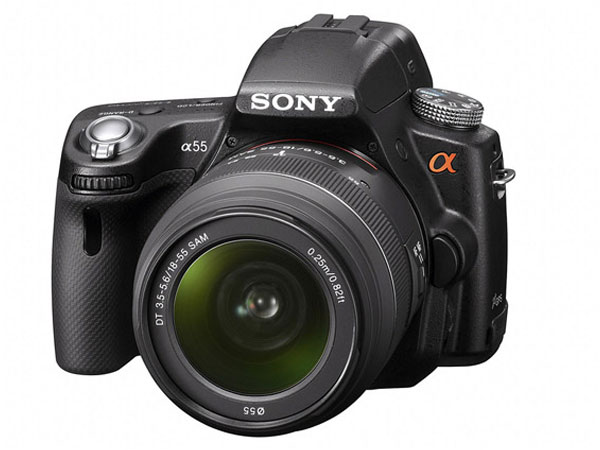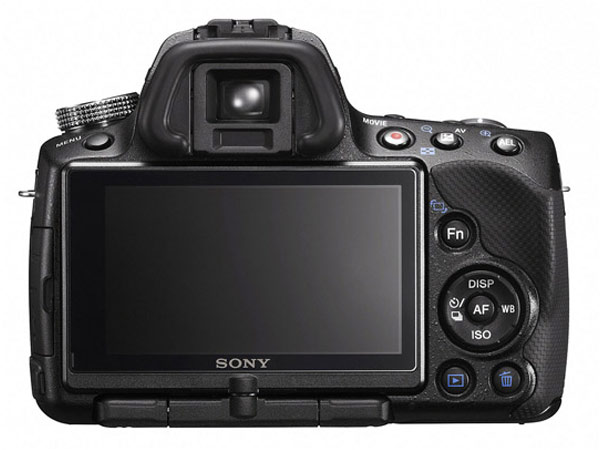In a rather rebellious move, Sony seems to have rejected the traditional DSLR design and instead created a hybrid that, like a compact camera, is from the ground up built around live view, but one that is also capable of offering full-time DSLR-style phase-detection autofocus. he SLTs do have mirrors, but they're mirrors that let the majority of the light pass straight through to the sensor, rather than having to swing out of the way to allow exposure. As a result they are fixed in position, always reflecting a portion of the light emerging from the back of the lens onto a phase-detection AF array housed in the top of the camera. The combination means they can offer features such as phase-detection AF during movie recording and extremely fast continuous shooting rates. The Sony á55 is one such SLT, which comes with a resolution of a rather impressive 16.2mp and commendable features, of which a tilting LCD is perhaps the most striking one.
Design and FunctioningAs has already been mentioned about SLTs, they are bound to have smaller bodies as compared to SLRs. The Sony á55 is no different in this matter, especially when compared to other Sony DSLRs. Its plastic body, however, is just as tough as any of them. The Sony á55 is the world’s first DSLR, along with the Sony A33, which comes with the with Translucent Mirror Technology that directs light to both the image sensor and the Phase Detection AF sensor simultaneously. This is one of the very few DSLRs which records 1080/60i Full HD, exactly the same resolution and frame rate as most broadcast and cable HDTV channels. Its 3-inch LCD screen can be tilted up and down for low angle or high angle shots. This TruBlack screen includes a special resin layer to suppress internal reflections, increasing contrast compared to conventional LCDs. Its Dynamic Range Optimiser function improves results with backlit subjects and recovers details hidden in shadows. The camera can automatically detect up to eight individual faces and adjust focus, exposure, white balance and flash to help deliver crisp, properly lit images of family and friends. Anti-Dust Technology helps keep the CMOS sensor clean, resulting in consistently clear pictures. First a static-free coating on the sensor's low-pass filter helps repel dust. Then vibration automatically dislodges dust from the sensor. Its SteadyShot Image stabilization reduces blur by compensating for camera shake. To top it all, an integrated GPS receiver records the location and time of every shot taken by the user. This camera is compatible with MemoryStick Duo/PRO Duo as well as SD/SDHC cards, and provides separate slots for the same.








